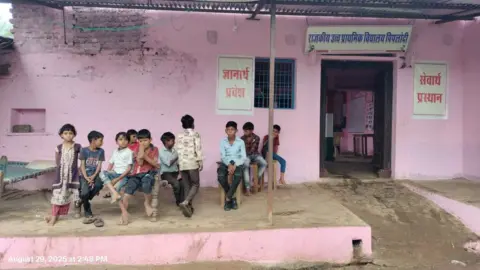Winding through the quiet streets of Fregona, a small town nestled in northern Italy, the stark signs of decline are all too evident. Mayor Giacomo de Luca points out shuttered businesses and a dwindling population of just 2,700—almost a fifth reduced over the past decade—while the primary school faces closure due to insufficient student numbers. "We only have four children ready to start," he says, emphasizing the urgency to invite families back.
Fregona's woes reflect a nationwide issue as Italy has seen a birth rate drop for 16 consecutive years, leading to a population decrease of nearly 1.9 million. The average Italian woman now has merely 1.18 children, a rate far below the 2.1 necessary for population replacement. The government under Giorgia Meloni has introduced incentives like a €1,000 Baby Bonus and extended parental leave, yet these measures have not significantly reversed the downward trend.
Valentina Dottor, a local mother, articulates the struggles of modern parenting. While she received some financial support for her daughter Diletta, the high costs of childcare are daunting. “Everything is challenging—work, school, money,” she states, revealing a reluctance among her friends to embrace motherhood for similar reasons. Although initiatives for financial assistance exist, many believe they fall short of ensuring a conducive environment for raising children.
In response to the demographic crisis, some communities, particularly in the Veneto region, have pursued grassroots solutions. The factory Irinox has partnered with others to create a heavily discounted creche nearby, tackling the childcare conundrum directly. Melania Sandrin, an employee, values the proximity and convenience immensely, stating, “I can reach him any time.” Despite such initiatives, many still perceive the need for broader reforms, including fully subsidized early childhood services.
The rapid demographic shifts also bear implications for immigration. With over 40% of Irinox’s workforce being foreign, CEO Katia da Ros acknowledges the necessity for increased immigration to balance a decreasing native population. “If we want to drive the economy forward, we will need foreign workers,” she remarks, challenging the government’s stance on immigration while highlighting the urgency of comprehensive policy reform.
Meanwhile, the closure of Pascoli Primary School in nearby Treviso illustrates the immediate outcomes of declining enrollment. The headteacher, Luana Scarfi, suggests that reasons for falling student numbers extend beyond mere birth rates. “Families have opted for schools with lower immigration indices,” she observes, indicating possible tensions that complicate community dynamics.
With forecasts indicating a potential drop of five million in Italy's population over the next 25 years alongside an ageing demographic, experts agree that merely offering financial aid is inadequate. Eleanora Franceschi, a concerned parent, underscores the need for practical services such as accessible summer camps—essential for working families. She expresses, "The government wants a bigger population, but how can we have more babies in this situation?"
Italy's struggle reflects deeper societal transformations where individual challenges, economic pressures, and governmental policies converge, creating a critical landscape where community life hangs in the balance. Urgent dialogue is needed, not just about financial incentives, but the framework supporting families to thrive in a changing world.






















